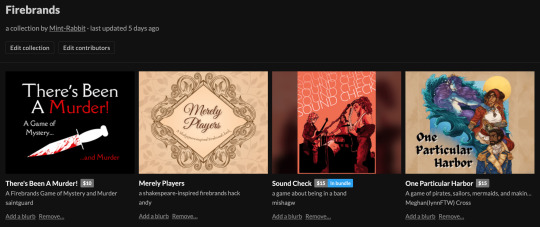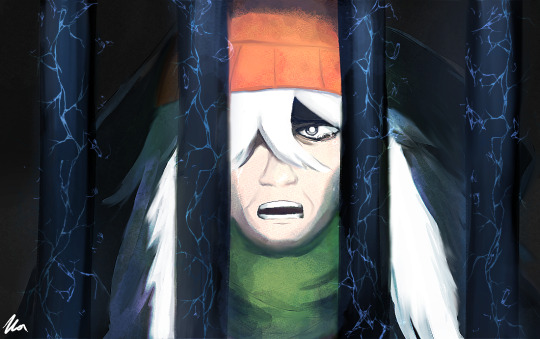#revisiting history
Explore tagged Tumblr posts
Note
Hi :) Perhaps an odd one, but I was wondering if you had any recommendations of games to play out events that have already happened? The end game has been predetermined, but the events that lead to it are more mutable? I'm running a dnd game with a group that has been very open to trying out different systems and I was thinking it could be very fun to put the player characters back in time into the shoes of other characters during the campaign's inciting event. Thanks!
Theme: Recalling Events
Hello friend, so there are definitely games that allow you to do something similar to what you’re looking for. There are games that go back in time, games that flashback to previous events, and games that take place at moments in our real-world history that have already happened. I don’t know if any of those games exactly work for what you’re looking for, but they might be interesting to look at in order to ask yourself how you want to run something in a timeline that you’ve established for a specific setting.





Ten Candles, by Calvary Games.
Ten Candles is a zero-prep tabletop storytelling game designed for one-shot 2-4 hour sessions of tragic horror. It is best played with one GM and 3-5 players, by the light of ten tea light candles which provide atmosphere, act as a countdown timer for the game, and allow you to literally burn your character sheet away as you play.
Ten Candles is described as a "tragic horror" game rather than survival horror for one main reason: in Ten Candles there are no survivors. In the final scene of the game, when only one candle remains, all of the characters will die. In this, Ten Candles is not a game about "winning" or beating the monsters. Instead, it is a game about what happens in the dark, and about those who try to survive within it. It is a game about being pushed to the brink of madness and despair, searching for hope in a hopeless world, and trying to do something meaningful with your final few hours left.
There is only a few facts pre-determined at the beginning of this game, but those facts are important: all of your characters will die. Over the course of the game, you will slowly blow out ten candles as your characters grow closer and closer too their doom.
However, the nature of that doom can be altered. I’ve seen it done for the Locked Tomb, for example, and you can set it in a modern world, a futuristic world, or a fantasy world if you like. If you want to hack this game for your group, I’d recommend playing out a scenario that involves characters that you don’t mind saying goodbye too - perhaps a catastrophe your party heard about, and you can role-play the last moments of some people they failed to save.
Firebrands Games
Mobile Zero Firebrands is a game about mech pilots getting into fights and falling in love, but more importantly, it’s a game that guides the group through mini-game-like scenes that are common tropes in various stories. The beginning scene and the end scene are usually pre-determined, but all of the other scenes happen in whatever order you prefer.
The original system has been hacked a number of times, so you might find a game or genre that works for you - perhaps you’d like to play pirates in One Particular Harbour, or gods and heroes in Divine || Mundane. You could play members of a religious order looking for a new leader in Hierophants, or look into the complicated lives of mages in Hearts of Magic. If you don’t find anything that works for your specific tastes that already exists, you could also hack the system to make it fit for your specific group.
Eat the Reich, by Rowan, Rook & Decard.
Eat the Reich is a tabletop roleplaying game in which you, a vampire commando, are coffin-dropped into occupied Paris and must cut a bloody swathe through nazi forces en route to your ultimate goal: drinking all of Adolf Hitler’s blood.
This over-the-top, ultra-violent game is designed to be played from beginning to end in one to three sessions of carnage, blood magic, meaningful flashbacks and hundreds upon hundreds of extremely dead fascists. It tells one story, it tells it loud, and it tells it brilliantly. Think Wolfenstein crossed with Danger 5 and you’re not far off the mark.
Eat the Reich both happens at a very specific point in time - WWII - and also has a mechanic that allows characters to flash-back to various points in their shared backstories in order to play through a high-action sequence while still getting to know the characters. Your vampires have been working together for a long time, and while Eat the Reich is meant to be rather fast, these flashbacks allow you to speed up that relationship-building by letting you fill the details in backwards.
Eat the Reich started out as a hack of Havoc Brigade, if I remember correctly, so the system is definitely hack-able: perhaps you can think of a big event that happened in your party’s past or even in another part of the world, and then design characters that represent folks who were behind the big event. I think this kind of game would work best for heists or high-stakes assassination - anything that expects your players to put their lives on the line for a big, sweet payoff.
Retrocausality, by Weird Age Games.
Retrocausality is a tabletop RPG about time travel adventures, in the vein of Bill & Ted's Excellent Adventure or Back to the Future.
It uses a rules-light, card-based system that lets you decide how time travel works. Whether you have a specific movie you want to emulate, you have Opinions on the Novikov self-consistency principle, or you prefer not to ask too many questions, Retrocausality can make it happen. Even better, the rules are so light you can use Retrocausality to run a time travel adventure in a different game. That's twice as much game.
Many of the examples shown in Retrocausality indicate that the time travellers you play will be messing with a timeline, and since the rules can be ported into a different game, that tells me that you could use this for any genre you like. This of course, means that you’re not just telling a story about your characters’ pasts - your characters are actually going back in time to a specific part of history.
I suppose you could use this to either bring your characters back to a time period before they were born, or maybe instead you’re interested in taking new heroes back to a point in time when your characters were doing something significant off-camera.
Houses of the Sun By Night, by Emily Zhu.
These are 13 houses of the underworld that the sun passes through at night.
These are 13 minigames you can play in specific situations, during your other games or on their own.
This is how the dead come back to life.
This series of games is explicitly designed to be hackable, with a setting that can be ripped apart if you like. The original setting is a nod to the underworld of Egyptian mythology, but the moments themselves can be zoomed in on a small moment or used to navigate a special event that may have big effects on the larger story. I think you can use some of the games in here to re-visit moments of your characters’ pasts, or reference events that may have happened to NPCs that the characters were not necessarily witness to.
If you want to learn more about this set of games, you can watch Aaron Voight’s review of the game on Youtube!
Other Games To Check Out
Feng Shui 2, by Atlas Games.
Time Travel Recommendation Post
96 notes
·
View notes
Text
#history#world history#history books#revisiting history#palestine#free palestine#gaza#free gaza#journalist#journalism#from the river to the sea palestine will be free#free palestine 🇵🇸#end genocide#from the river to the sea 🇵🇸#journalists of gaza#palestinian journalists#journal#no justice no peace#not a coincidence#justice for palestinians#justice for palestine#social justice#crimes against women#crimes against nature#crimes against children#crimes against humanity#tiktok post#tiktok fyp#tiktok video#tiktok
9 notes
·
View notes
Note
What kind of books by Dark Academia do you suggest to me? At the moment I’m on Tolstoj but I wanna to know much
The Secret History by Donna Tartt anything by Donna Tartt (praying we get another book in the next 5 years)
Maurice by E. M. Forester
Brideshead Revisited by Evelyn Waugh
The Patrick Melrose series by Edward St Aubyn
Confessions by Kanae Minato
In the Name of the Rose by Umberto Eco
Piranesi and Johnathan Strange and Mr. Norrell by Susanna Clarke
The Picture of Dorian Gray by Oscar Wilde
Frankenstein by Mary Shelley
Dead Poets Society by N H Kleinbaum
Never Let Me Go by Kazuo Ishiguro
An Interview with the Vampire by Anne Rice
A Little Life by Hanya Yanagihara
The Idiot by Elif Bautman
The Talented Mr Ripley by Patricia Highsmith
Babel by R F Kuang
Jane Eyre by Charlotte Bronte
The Song of Achilles by Madeline Miller
Wuthering Heights by Emily Bronte
The Bell Jar by Sylvia Plath
Stoner by John Williams
The Queens Gambit by Walter Tevis
The odyssey by Homer
Carmilla by J Sheridan le Fanu
We Have Always Lived In The Castle by Shirley Jackson
Picnic at Hanging Rock by Joan Lindsay
Labyrinths by Jorge Luis Borges
The October Country by Ray Bradbury
Inferno by Dante Alighieri
Just to name a few!
#dark academia#classic academia#academia#dark academia aesthetic#dark academia books#dark academia vibes#chaotic academia#studyblr#bookworm#books#bookblr#donna tartt#the secret history#maurice#brideshead revisited#patrick melrose#piranesi#babel rf kuang#babel an arcane history#inferno#we have always lived in the castle#Stoner#the queens gambit#the odyssey#the bell jar#sylvia plath#wuthering heights#The idiot#the talented mr. ripley#interview with the vampire
555 notes
·
View notes
Text






"I feel like I had nothing to hide. I didn't feel like I had to show you my good side. I feel like I can be myself around you."
#hwang hyunjin#han jisung#hyunjin#jisung#han#hyunsung#userlau#usersa#forhanji#hyunjinsource#staydaily#skzco#e01o#daily3racha#*hyunjin#*jisung#*hyunsung#a hyunsung video of all time. for the history books.#i'm going to be real i'm a little fatigued by the rap better dance better label lol but i get it and they still refer to themselves that wa#so i can't be too annoyed#considering how much i love the enemies to friends and/or lovers trope it makes sense that I love this duo in particular so much lol#them talking about how they almost physically fought with each other to crying over each other :))))))))))))) I'm fine who even cares#when i learn how to write captions it's so over#i definitely think i'll revisit this video again because they said sooo much that I want to immortalise on this blog#the caption being one of many such instances#anyways i am done being insane over them (a woman who is lying)
146 notes
·
View notes
Text

Symbolism & Foreshadowing: Three Studies for Figures at the Base of a Crucifixion (1944) by Francis Bacon
Bacon had painted for years before he painted the very work displayed here in the show. After painting this work, he then insisted that none of his other previous works counted, and that this triptych should be considered his origin story. He tried to rewrite his own history. Art critics mostly let him get away with it too.
Very interesting that they have this work, the first “true” work in the artist’s own revisionist history of his own life. This artist is famous for paintings in series but the choice of a triptych (3) than any other number is suggestive. It’s a triptych of living figures, too.
The figures are inspired in part by the Furies, who would (either as a function of revenge or justice) brutally kill transgressive murderers for crimes such as matricide and patricide.
Other fun facts about Bacon:
- gay, and went from being the younger, dominated partner to being the older and more dominant partner
- Irish
- history of substance abuse
- obsessed with painting mouths
- people would call his work horror, but he couldn’t understand why
- once got such a bad crush (his word) on a painting that he couldn’t bring himself to visit it in person
- canonically attracted to his own father
#feeling relevant yet#unsubtle symbolism#foreshadowing#revisionist history#art history#queer history#francis bacon#bacon triptych#Three Studies for Figures at the Base of a Crucifixion#Three Studies for Figures at the Base of a Crucifixion 1944#the furies#patricide#homosexuality#gay#queer#queer artist#post war artist#amc iwtv#iwtv#amc interview with the vampire#interview with the vampire#armand#louis de pointe du lac#daniel molloy#This triptych is the one Armand mentions earlier in S2. Probably.#Unless they have others#perhaps even the 1988 revisit of this one?#this work is at the Tate if you want to see it
171 notes
·
View notes
Text
Decided to read Brideshead Revisited for the first time and
1. This is the gayest book I have ever read. This is not subtext common to the time period, this is Evelyn Waugh slamming us against a window going LOOK AT HOW FUCKING GAY THESE DUDES ARE, LOOK, LOOK AT THE GAYS
2. Anthony Blanche is amazing. I can hear exactly how he speaks in my head perfectly. One of my best friends was very much the American Anthony Blanche and reading him telling Charles a story about pretending to be a girl friend of his on the phone with an older man made me go text my friend.
3. I suddenly have a burning need to know when exactly the term "invert" or "inverted" as a casual way of referencing homosexuality fell out of favor
4. Sebastian having a wildly religious family that he avoids whenever possible despite having a connection to and love for them he cannot shake off is such a deeply relatable feeling
5. Seriously. I was led to believe this book had "queer subtext" but I have yet to find any text that isn't the time period equivalent of shouting GAY from a rooftop.
#brideshead revisited#queer literature#queer lit#classic literature#classics#evelyn waugh#reading#bookworm#invert#gay history#queer history
47 notes
·
View notes
Text

"Get the key back. It should not be used. Everything will vanish again. Do you want to know unending pain…like I have?"
#Pokemon xy#pokemon x and y#pokemon#pokemon fanart#my art#kalos#az pokemon#Revisiting this scene/part of the game and man#pokemon az#it just hits differently (and hard)#he's on his knees btw#i feel like he should have been sitting on the ground when we see him in jail in utter despair watching history repeat itself#this man's already trapped in the prison of immortality and sorrow#now he's stuck in a physical one unable to do anything but#helplessly watch with pure guilt + shame as the protag goes to stop the ult. weapon#sending someone young and small like the protag to fight is reminiscent of Floette being sent off#imagine if he gets sent to jail in ZA for whatever reason
71 notes
·
View notes
Text
Academia Romance Book Recommendations
A Room With a View, by E. M. Forster: Romantic Academia; Music; Spring; Italy and England
Green Dolphin Street, by Elizabeth Goudge: Dark Academia; Navigation; Summer; the Channel Islands and New Zealand
Brideshead Revisited, by Evelyn Waugh: Light Academia; Painting; Autumn; England
The Blue Castle, by L. M. Montgomery: Chaotic Academia; Natural History; Winter; Canada
#book recommendations#romance#a room with a view#green dolphin street#brideshead revisited#the blue castle#e. m. forster#elizabeth goudge#evelyn waugh#l. m. montgomery#romantic academia#dark academia#light academia#chaotic academia#music#navigation#painting#natural history#spring#summer#autumn#winter#italy#england#channel islands#new zealand#canada
30 notes
·
View notes
Text



Revisiting TV hot gay couples: Monsieur and Chevalier aka Monchevy from the lavish TV series Versailles ( 2015-18).
I didn't follow their storyline that much at the time but I have been catching up with it now and what a rollercoaster of emotions this love story is. Monsieur and Chevalier are both fascinating characters, filled with passion and fire. 💖💔🔥🔥
Here's a playlist of many of Monsieur and Chevalier's scenes
#Revisiting TV hot gay couples#gay couple#gay tv shows#gay culture#lgbtq#lgbt drama#lgbtq characters#love is love#gay kiss#gay love#Youtube#monchevy#chevalier de lorraine#versailles#Monsieur and Chevalier#gay history
24 notes
·
View notes
Text
I’m translating parts of the Iliad this semester and something my greek professor keeps repeating is that the Iliad is fundamentally about “a leader who can’t lead” and “a follower who can’t follow”
Much like the Odyssey is about Odysseus’ return home but is also about guests who are really shit at being guests
And of course this all made me think about tsh again, and then I realized that tsh is also fundamentally about a leader who fails to lead (Henry) and followers who fail to follow (Bunny and then Charles)
#henry hides his shortcomings well#but i believe there’s a case for my point#donna tartt herself said that the beginning of tsh is like the beginning of the iliad#within the first lines is the gist of the story#I’ll revisit this later when I have time#the iliad#the secret history#donna tartt#theo talks#charles macaulay#henry winter#bunny corcoran#homer
74 notes
·
View notes
Note
what is your favorite thing about charles and your favorite thing about erik? separately, as in what you like most about their characters :]
a devious question this one is, my friend!!! it's hard enough for me to explain my thoughts cohesively, but having to pick ONE thing i particularly love is difficult. with characters like charles and erik, theres been so much done with their characters over the decades and so they have so many components to them that make them so interesting and fun to observe. BUT I TRY FOR YOU TODAY. under the cut i kinda ramble and the size of this text box makin me anxious
i think if i were to be simple and broad, what i enjoy most about charles is his determination to help others, even if he isn't really thanked and/or if people don't even like him. ofc, this isn't to say he hasn't done wrong- to be honest, the fact he does wrong/questionable things at times is another aspect of him i really enjoy, maybe because- broadly speaking- he's meant to be altruistic (intent vs outcome and all that). i don't know if that's super exciting to most people, but it is for me
as for erik, my reason for liking him is easier to explain tbh. To Be Simple And Broad, his progression from villain to antihero over the decades has been fun to observe (as much as i have so far anyhow) and analyze. i think to be a bit more specific, him using his rage and pain as justifications for his villainous actions is definitely what compels me the most: hurt people hurt and the sort, an idea i've always found interesting (something something vicious cycles and the like). yet now, he recognizes this wasn't really. A Just Thing To Do and is beginning to change that, which i enjoy
#snap chats#may you forgive me anon i always feel awkward explaining things AVELKJEAKLJ#i feel esp awkward cause i haven't read toooo much of the comics yet- like ive read. an ok amount so far krakoa wise#can you guys tell im fighting god himself to Not write a fuckin. NOVEL#im so sorry i have an over-explaining problem my mom was mean to me growing up but anyways#i definitely want to read more and more outside krakoa. the more i read the more im fascinated by these two and their history#but to continue my prattling. as if the three paragraphs above arent enough This Is Not A Thesis RELAX#i think a. 'poignant' moment i think adds to what i like about charles too is that soliloquy where he recognizes people dont like him#yet he could always be worse- like if he's bad now to others imagine if he really just said Fuck It All#it's simple but so am i whaddyagonnadoboutit. i mean that point itself could be discussed but i'm trying to keep this brief bear with me#i so bad want to know what issue that's from tho all i know is that it's from krakoa but i neeeed the whole context#i think like. an additional bullet point to charles i also like is his loneliness#and i say this cause- I Say From My Amateur-Psychology Armchair- it's a component of why he's so earnest to help#but im keeping this point in the tags until i can confidently verify that with myself after some more reading#Unfortunately a favorite pass time of mine is psychoanalyzing characters like why else you think i major in psychology smh#im going to force myself to cap the post here because i ended up typing like 20 more tags just rambling#and as i said id like to keep this simple and clean !!!!! i have sat here for like four hours answering this ngl#ignore the fact half that time was spent getting distracted by solitaire and riffling cards ok I Am Very Easily Distracted#but fr when it comes to charles and erik- charles esp imo#i feel like i need to write a whole paper just so i can mention the nuances of the characters and like. EVERYTHING#because again six decades is A Lot of time for writing decisions to be made and for their characters to change over time#im a glazer but i wanna be a nuanced glazer yk. is that glazing at that point-- w/e anyway#its a lot. so today you will have to tolerate a very Blah answer from me which i must apologize for#down the line once ive read a comfortable amount more varying from multiple eras maybe ill revisit this question more in depth#as of right now tho .... chat i wanna get legion of x so bad i skimmed it and hhhhhhhhim gonna throw UP#i need to shake charles like a ragdoll BUT ANYWAY. bye bye for now lovelies !!!!!!!#please forgive me if i didnt answer your question efficiently ..#here i am saying i wanted to keep the tag count brief and yet !!! jesus christ. shut up My God I REACHED THE TAG LIMIT
23 notes
·
View notes
Text
Hold up. That's... Huh. That's really interesting, actually. I don't think I've ever seen anyone talk about it but. Like. The relationship between Monokuma and Monomi is kinda revealing.
Okay. So. In Danganronpa 1, when Junko is first revealed as the Mastermind, the first topic of conversation is about killing Mukuro. It is what the trial's for, after all. And the fact that Mukuro's her sister, specifically Mukuro is the older twin, leaves everyone with questions.
Junko flies off the handle about how lovely despair is and how it was better for the plan to kill her and how Mukuro's despair must have been so sweet and how her own despair at killing Mukuro was so sweet and all of that Junko stuff.
But. Before she does that? She says this.



Hey. Uh. Hey, Junko? It sounds like you've got some bitterness here. Some deep-seated abandonment issues and resentment towards your older twin for signing on with Fenrir.
Which makes it very interesting when you later say that you quickly deduced Mukuro would be unfit to act convincingly in the role of Ultimate Fashionista Junko Enoshima. That you had to kill her or else she'd blow her cover because she's just not pretty and talented enough to be you.
It sounds to me like you murdered your sister because you've been holding a grudge against her for abandoning you.
...
AND THEN comes Danganronpa 2. And Junko's like, "I've remodeled Usami into MONOMI, and she's going to be MY little sister who I can mistreat and make miserable because that's how people act towards little sisters!"
Like. Junko? I think you might have some issues.
...
Some other issues, besides the whole serial-killing world-destroying despair-fiend thing.
#danganronpa#danganronpa trigger happy havoc#danganronpa 2 goodbye despair#junko enoshima#enoshima junko#mukuro ikusaba#ikusaba mukuro#junko enoshima needs a therapist#the hottest take in danganronpa history#revisiting dr2
167 notes
·
View notes
Text

#brideshead revisited#tv history#television#television series#evelyn waugh#male style#male fashion#gay movies#gay life#gay love#teddy bear#teddy#jeremy irons#anthony andrews#80ies
366 notes
·
View notes
Text
Regarding the Mal book, I do think some attention deserves to be paid to this part (which took place in 1975, a few months before he died):
But there were other occasions when Mal couldn’t wrest himself from his demons so easily, times when he exacerbated his condition with drink and drugs. And, for the first time, Fran found herself afraid of her boyfriend, whose darkness had never been more acute. It all came to a head one night when Mal, drunk to the gills, began threatening her with his Colt Woodsman pistol, at one point placing the gun against her head before discharging it into the washing machine. When he sobered up, Mal couldn’t have been more apologetic, swearing to mend his ways and be the boyfriend she deserved.
He held a loaded gun to his girlfriend's head and threatened to kill her! That is not okay! And he fired the gun at the washing machine while they had a four-year-old in the house with them - imagine how scary that might be for her.
So yeah, Mal was a great big lovable teddy bear to his male friends, and he was a devoted aide to the Beatles, and he was also a terrible husband and an absentee father who coerced young fans into sleeping with him in order to meet their idols, got a young woman pregnant and then abandoned her, threatened to kill his girlfriend, and then when he was feeling suicidal, grabbed a loaded rifle and forced that same girlfriend to call the cops on him (again with a child in the house), making her live with that for the rest of her life. All of that has to be considered as part of his legacy, and I'm glad the book didn't completely shy away from it.
#books: living the beatles legend#maybe it shouldn't be surprising that his wife let his papers sit for so long#it couldn't have been an easy history to revisit
66 notes
·
View notes
Text
Sometimes I think about all of my dark academia (both books and movies) characters interacting with each other... they are almost all murderers and need therapy... I love chaos which would ensue
#the secret history#if we were villains#school ties#havent read bunny yet but i plan to#villains series#ANY sherlock holmes series really#like minds 2006#alex stern series#hell bent#ninth house#skulls#brideshead revisited#the dreamers 2003#oxford murders#talented mr ripley#black swan#maurice#the picture of dorian gray#sherlock holmes#dead poets society#bunny#good will hunting#the goldfinch#kill your darlings#the queen's gambit#the riot club#mary shelly 2017#the imitation game#mona lisa smile#picnic at hanging rock
104 notes
·
View notes
Text
"how about a kiss for your jailbird brother" 😀
#how about no#how about we revisit jail#how about you stay there#wtf#charles macaulay#tsh#tsh donna tartt#the secret history#camilla macaulay#donna tartt#books#booklr#bookblr#reading#book#reader#dark academia#dark academia books
7 notes
·
View notes